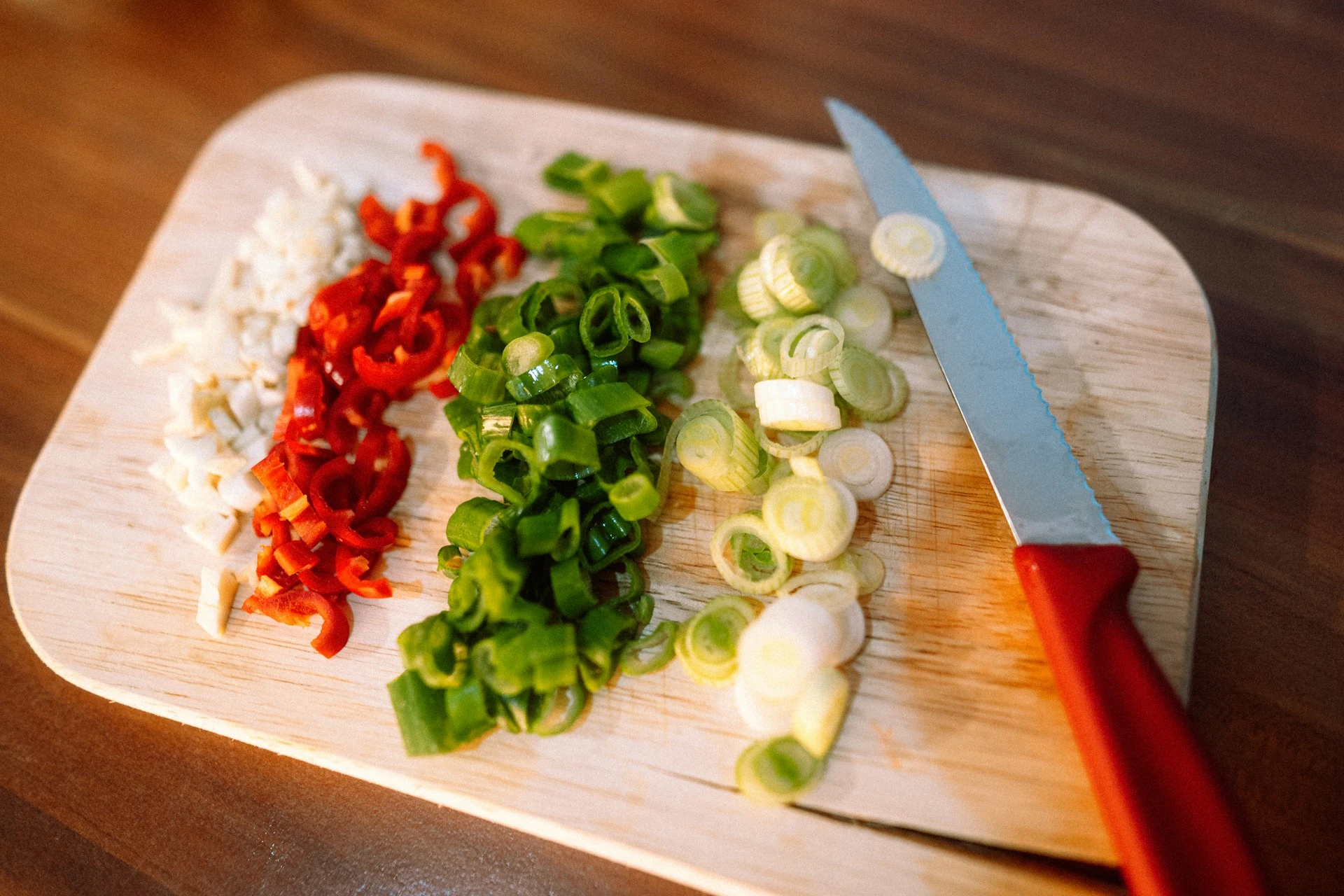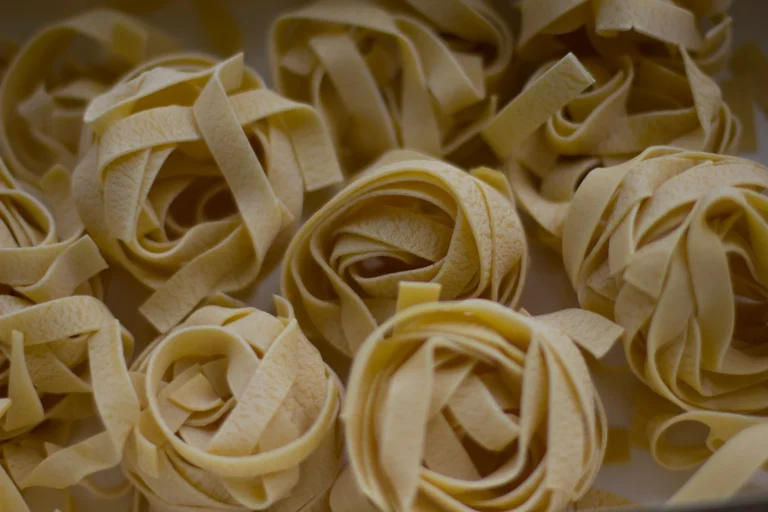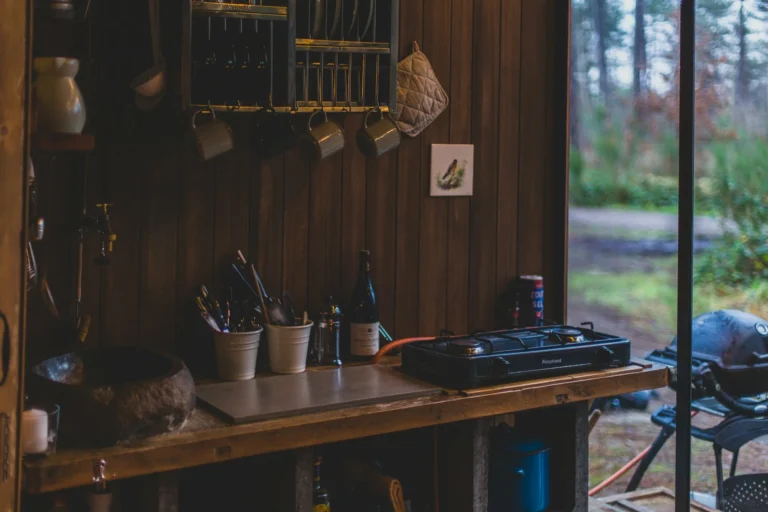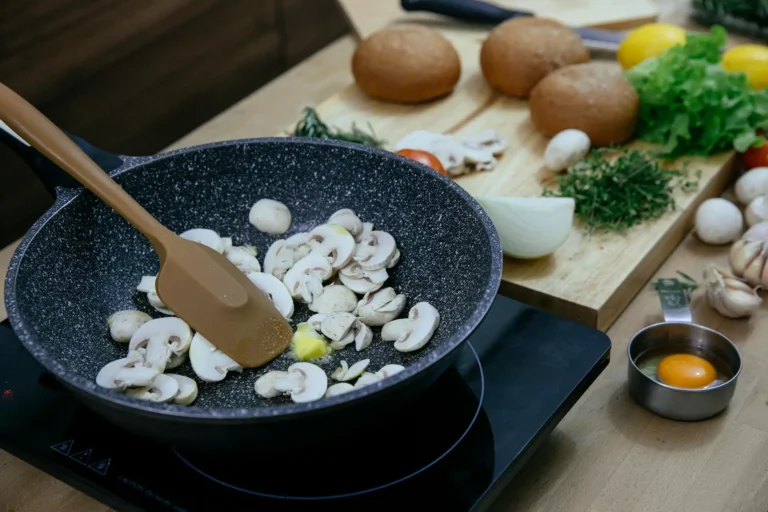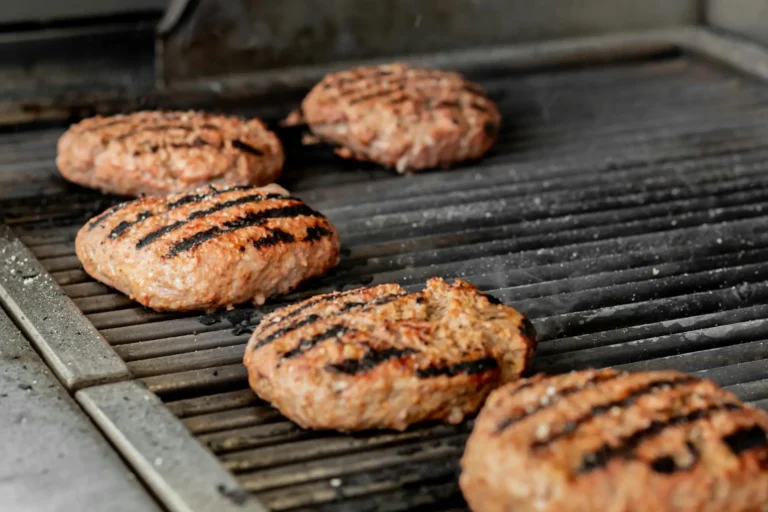Mastering Knife Skills: A Beginner’s Guide to Chopping, Slicing, and Dicing
The significance of acquiring knife skills cannot be over stated for those who enjoy cooking. Learning how to use a knife well can make food preparation faster, safer and more enjoyable. In this guide, we will cover the basics of chopping, slicing and dicing and tips that will help you improve your kitchen skills.
01. Selecting the Appropriate Knife
1.1 Types of Knives
Before you begin chopping, slicing or dicing; you need the right tools. There are three main types of knives that you will use most frequently:
- Chef’s Knife: This particular knife is used for nearly all kitchen tasks. It has an 8-10 inch long broad blade suitable for chopping, slicing, and dicing.
- Paring Knife: A small knife about 3-4 inches long best suits peeling purposes and intricate work.
- Serrated Knife: Designed with a jagged edge along its blade, this type of knife is perfect for cutting through items such as bread, tomatoes or any other soft skinned kind.
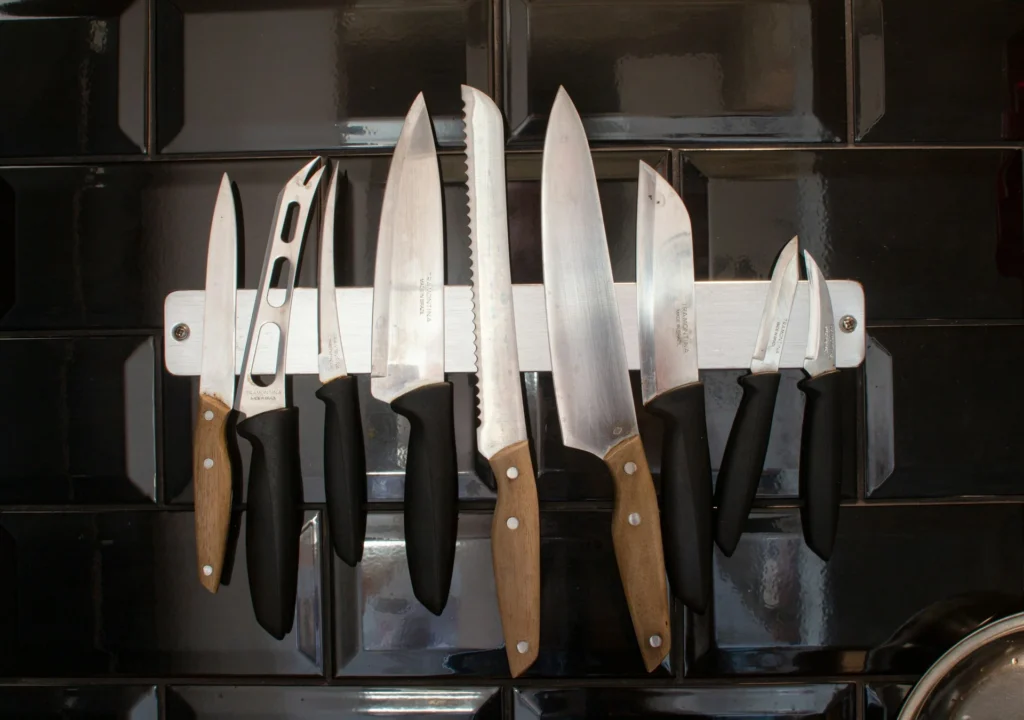
1.2 Choosing the Right Knife for Different Tasks
Choose a knife accordingly when doing different tasks. For vegetables and meats use chef’s knives mostly; small or delicate things – paring ones; while serrated knives are ideal for handling breads or produce with tender skins.
02. Knife Safety Fundamentals
2.1 Right Grip and Hand Placement
Hold the knife firmly all the time. Put your index finger and thumb on both sides of the blade just before the handle; then wrap other fingers around it. This kind of grip helps a person to control things better and stops any possible sliding.
2.2 Procedures that Prevent Accidents
Always cut away from yourself while keeping your fingers folded under your knuckles (also known as ‘claw grip’). It saves you from accidents caused by contact between blades and fingers. Make sure your chopping board is secure by placing a damp towel under it.
03. Fundamental Styles of Knife Cuts
3.1 Chopping Technique
Involves cutting food into irregularly shaped pieces. This basic method is used in preparing vegetables and herbs.
3.2 Slicing Technique
This refers to cutting food into thin, regular pieces. Commonly used for some vegetables, cheeses, or meats.
3.3 Dicing Technique
Means to chop food into small cubes of equal size. In many cases, dicing is employed when ingredients need to be evenly mixed such as in soups or salads.
04. Chopping Techniques
4.1 Rocking Motion
The rocking motion is the fastest way to chop. Keep your knife’s tip on the cutting board and rock the blade back and forth. Using this method will make it easier for you to chop in a short period of time.
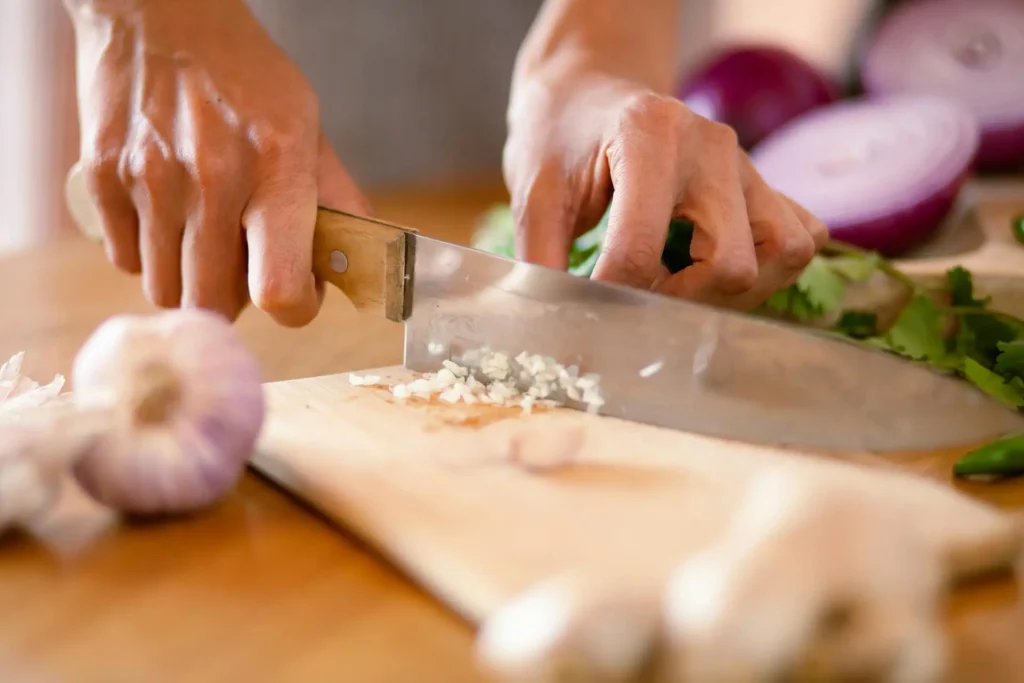
4.2 Chopping Vegetables and Herbs
With vegetables, slice them into halves to create a flat area and then chop. However with herbs tightly bunch them together before chopping by moving the knife up and down.
05. Slicing Techniques
5.1 Straight Slicing
This involves piercing straight through with an even cut from top to bottom.This technique will leave you with uniform slices of meat or cheese as well as vegetables.
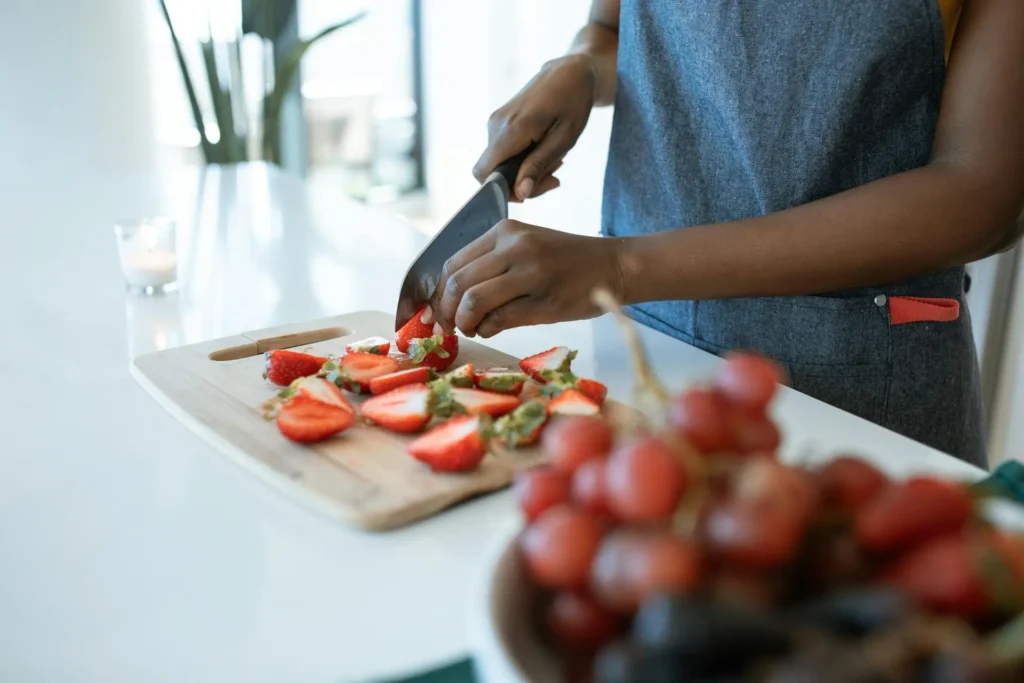
5.2 Bias Slicing
And Bias slicing, on the other hand, means cutting at an angle. This technique is usually used when preparing meats such as beef or fish so that there would be larger surface areas for splattering or for reasons of visual appeal.
06. Dicing Techniques
6.1 Large Dice
For a large dice, cut the food into strips about 3/4 inch wide, then cut the strips into 3/4 inch cubes. This size is perfect for chunky salads or hearty stews.
6.2 Medium Dice
In a medium dice, however, one should first make strip about ½-inch wide out of the food material followed by making cubes about ½-inch wide from those strips.This size works nicely for soups and tossed vegetable dishes.
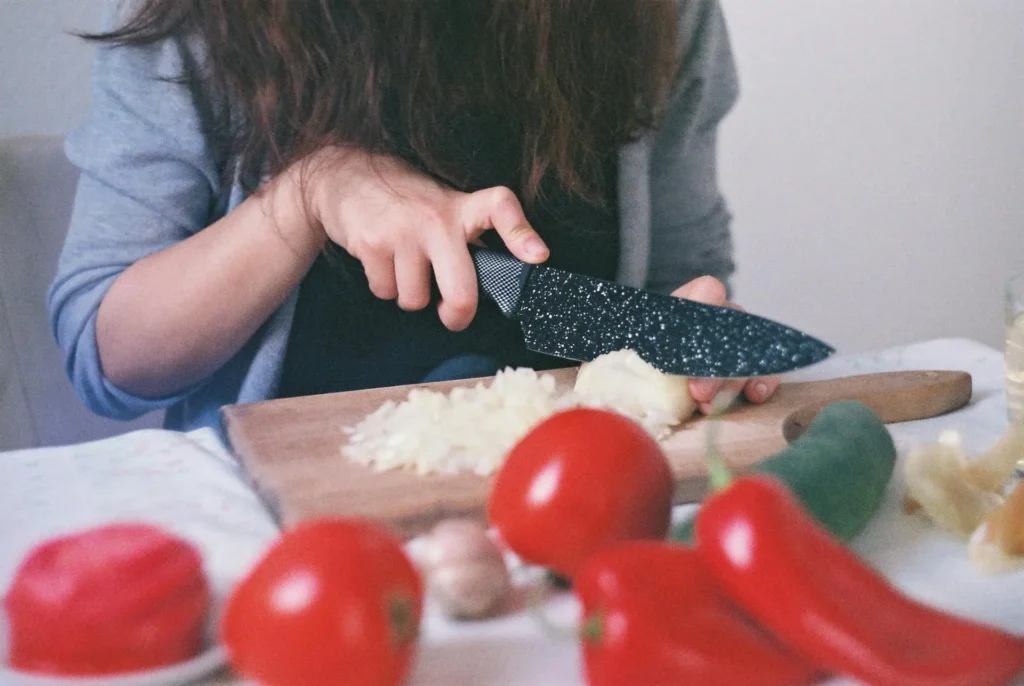
6.3 Low Down on Dicing
For dicing small, cut your food into ¼” wide strips, then dice each strip into 1/4 inch cubes. This is the perfect size for salsas and finely chopped salads.
07. Julienne Cuts and Batonnet Cuts
7.1 Understanding the Julienne Cut
The julienne cut is composed of long and thin pieces that are often referred to as matchsticks. For julienned cuts, slice them at 1/8” thickness, then stack these slices up before cutting them into ribbons.
7.2 Practicing Batonnet Cuts
Batonnet cuts are thicker than a julienne resulting in around 1/4 inch wide by about 2-3 inches long pieces. Vegetables like carrots and potatoes typically undergo this kind of cut.
08. Mincing Garlic and Herbs
8.1 How to Mince Garlic?
To mince garlic, break it open with the side of your knife that is blunt so as to remove its outer skin. Then proceed by finely chopping it using a rocking motion which results in tiny minced bits.
8.2 Techniques for Mincing Herbs
For minced herbs, gather them very tightly together then use a sharp knife to chop them up small. To achieve even tinier herb particles, rock the blade back and forth when chopping them further down.
09. Advanced Skills in the Use of a Knife
9.1 Chiffonading Leaves
Chiffonade is a technique used to cut leafy vegetables into ribbons. Stack and roll leaves tightly, then cut them across the roll into thin slices.
9.2 Brunoise for Tiny Accurate Cubes
Brunoise refers to very fine dices, which are about 1/8 inch or smaller. The first step involves julienning the food and then turning the julienne and dicing it finely.
10. How to Keep Knives in Good Condition
10.1 Sharpening and Honing
Frequent sharpening keeps knives efficient and safe. To sharpen use either a sharpening stone or professional services, while for maintenance between such times use honing rod.
10.2 Perfect Storage Ideas
Use Knife blocks, Magnetic strips or knife organizer in your drawer to store your knives this prevents accidents and protects blades from damage.
11. Regular Training Makes You Perfect
11.1 Why Practice Regularly Counts
The more you practice the better you get at cutting with knives. This makes you work faster without any mistakes when preparing meals.
11.2 Tips for Improving Your Knife Skills
- Experiment with different types of cuts on various foods.
- Watch online videos teaching how to cook using recipes preferred by you.
- Pay attention to your grip and technique.
12. Conclusion
Cooking involves mastering the knife skills necessary. Choosing a right knife, practicing safety and getting to know different cuts will positively affect your cooking experience. Just remember that you have to maintain it and practice regularly. As you become skilled in chopping, slicing and dicing through time and patience.
13. Frequently Asked Questions
01. Why is it necessary to have good knife skills?
Food preparation becomes much quicker, safer and more fun with good knife skills. It also promotes even cooking and improves the look of food.
02. What type of knife is good for starters?
Chef’s knife is the most adaptable and functional one for beginners. It can be used in many ways such as cutting through vegetables or slicing meat.
03. How often should I sharpen my knives?
Depending on how frequently you use them, sharpen your knives every few months. Routine honing helps to keep the edge between re-sharpenings.
04. What is the difference between sharpening and honing?
Sharpening removes metal from the blade to create a new edge while honing realigns already existent ones to keep them sharp.
05. Can I practice knife skills with any food?
Yes, practicing with different foods is permissible. Start with firm vegetables like carrots and potatoes, then move on to softer items like tomatoes and herbs.

